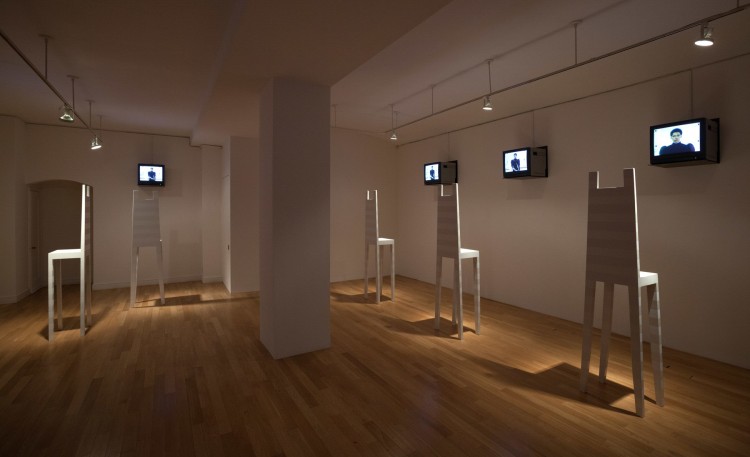
Installation view, Robert Wilson, Deafman Glance: Video Installation, Paula Cooper Gallery, New York, September 24 - November 13, 2010. Courtesy Paula Cooper Gallery.
Sheryl Sutton
Through Oct. 26. The Kitchen in Focus at 47 Canal, 59 Wooster Street, Manhattan; 646-415-7712, thekitchen.org.
A vibrant participant in the downtown performance scene in the 1970s and ’80s, Sheryl Sutton is the subject of “The Kitchen in Focus” at 47 Canal. There is a lot here: two videos (one about 27 minutes; the other, 45 minutes) and many photocopies and photographs, including a sublime portrait of Sutton by the photographer Peter Hujar. Still, I left wishing there were more videos, because Sutton is a mesmerizing performer whose slow, expert movements are arresting even — or particularly — in an era of constant distraction.
One video is a grainy black-and-white recording of “Paces” (1977), a performance originally done at the Kitchen in SoHo. In it, Sutton takes apart classical dance and everyday movement, similar to the work of people like Yvonne Rainer, Simone Forti, Trisha Brown and especially Steve Paxton, who was interested in the physics of the spine and produced in-depth studies of walking. Sutton, too, raises walking and spinal awareness to a supreme level. In “Paces” she walks casually, in slow motion, and in a pre-Michael Jackson moonwalk — but always with grace and avian precision.
The second video, “Deafman Glance” by Robert Wilson, which was aired on television in 1981 and shown at the Kitchen in 1982, relies even more on focused and controlled movement. It stars Sutton, who is Black, as a mother going about her household duties and then stabbing her two sons. It’s an excellent document of experimental television, but the fact that the victims are Black boys, even if there is no blood — the film is stylized and theatrical — is significant. A news release on the wall, from 1982, says Sutton’s performance asks “questions of morality, and mortality.”
In the present moment, though, Sutton’s virtuosic, dance-like movement feels tied not just to downtown performance and so-called transgressive TV, but also to larger narratives of racialized violence and how it is enacted with numbed precision.
— Martha Schwendener